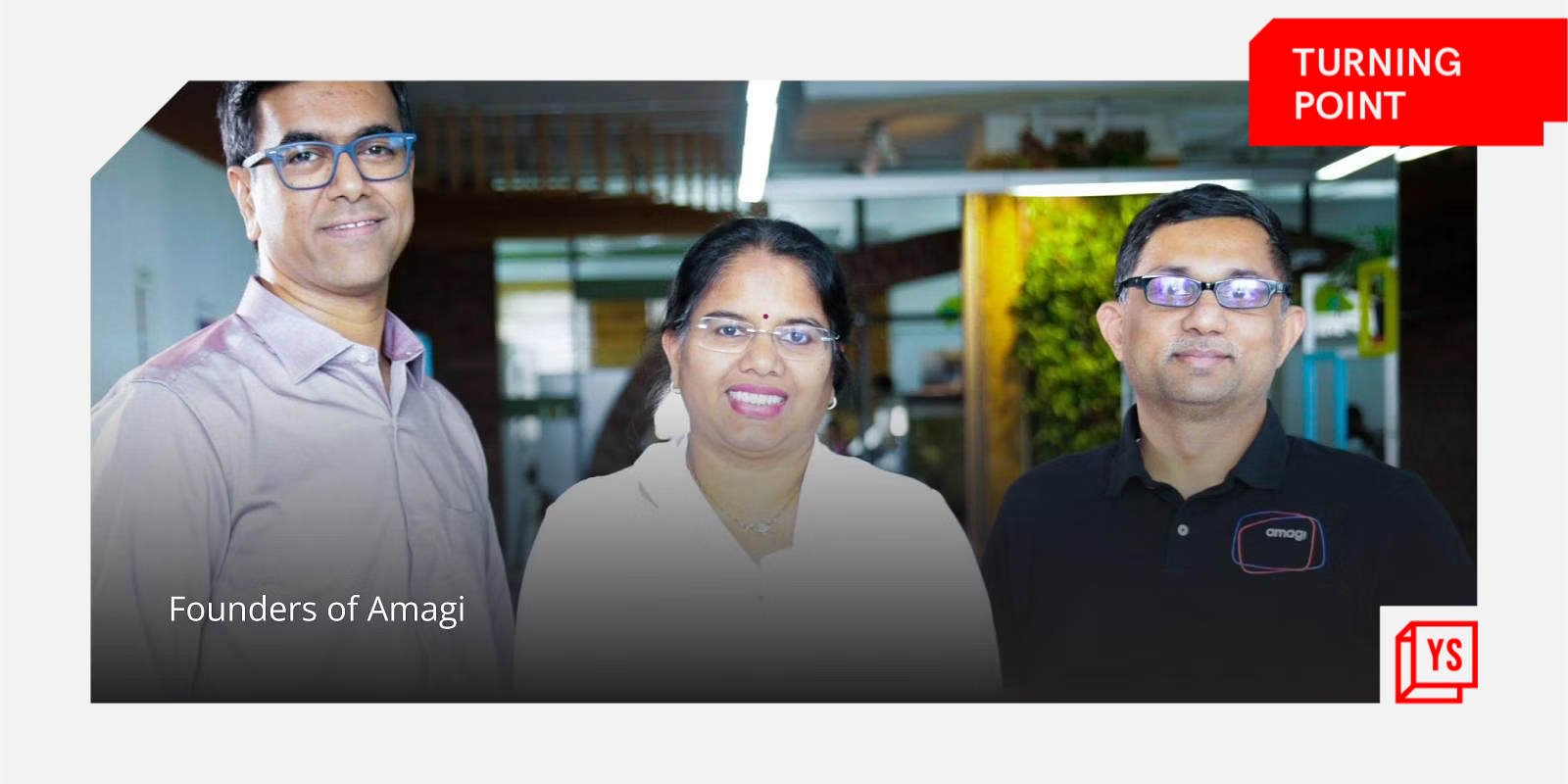Earlier in March, — the Bengaluru-based SaaS platform that enables TV networks and content owners to distribute and monetise content across different platforms — raised a $95 million funding round and became a unicorn.
In 2008, Srividhya Srinivasan, Baskar Subramanian, and Srinivasan KA wanted to revolutionise global content delivery and monetise the media industry. They co-founded Amagi after their previous venture, Impulsesoft, was acquired by NASDAQ-listed SiRF.
Pivoting to a winning product
By 2015, the SaaS mediatech startup was going through an interesting phase, Baskar tells YourStory.
“We were looking for an opportunity where we thought that we can replace the hardware a typical TV channel uses for video operations and pack into a complete software and do it all on a cloud,” he adds.
Their intuition — streaming or over the top (OTT) services would play a larger role than the usual TV services, and legacy media companies would have to adapt to this change — encouraged the Amagi team to make this difficult decision.
Betting on these futuristic market trends — even five years ahead of its time — Amagi moved from geo-targeted TV ads, with a focus on the Indian market, to a cloud-based company, largely focusing on the US, which contributes nearly 75 percent of its revenue.
Besides, Amagi pivoted to a new model as its then business model had a structural issue.
“In hindsight, it looks good, but it was a very big decision at the time. We had one business that was making Rs 100 crore in revenue, and the other was less than Rs 5 crore. We were shutting down a hundred crores business and starting a company, pretty much from scratch,” Baskar explains.

The journey
Although Amagi became the first SaaS mediatech startup to become a unicorn, the team had to make several tough decisions and face challenges.
First, the co-founders had to convince the investors. While Amagi was considering a pivot, it had raised close to $40 million.
Second, the startup had to reduce its team size, and lastly, it had to convince those within and outside the startup that it was going towards growth.
“It was kind of a challenging time for everybody. More than us, I think, for the investors, employees, and those we let go, would have had even more challenging times,” says Baskar.
Future for Amagi
“For the next company, we set ourselves three objectives — the technology should be disruptive and revolutionary, it should be a billion-dollar (revenue) company, and the disruption should be through innovation,” says Srividhya Srinivasan, Co-founder, Amagi Media Labs.
“Today, Amagi is a next-generation media technology company,” she adds.
At present, Amagi provides end-to-end cloud-managed live and on-demand video infrastructure to content owners, broadcast and cable TV networks, and OTT platforms in over 40 countries.
It has close to 480 members in its team, with 250 employees in the technology department.
Its customers include large media conglomerates (NBCUniversal, Paramount, A+E Networks UK, etc.), connected TV majors (Samsung TV Plus, Roku, VIZIO, LG Channels, etc.), content owners (Tastemade, USA Today, AccuWeather, etc.) and leading OTT/FAST players (Fubo, STIRR, Redbox, Rakuten TV, etc.).
“We have evolved into a more of a platform player,” tells Baskar
Amagi has a presence in New York, Los Angeles, Toronto, London, Paris, and Singapore, a broadcast operation in New Delhi, and an innovation centre in Bengaluru.
Recently, it launched its operations in Australia and eastern Europe and plans to launch in South Korea soon.
Speaking on merger and acquisition plans, Baskar says the unicorn will invest more into live sports, news, and advertising stack opportunities in terms of both internal and external acquisition.
The mediatech startup claims it had annual revenue growth of 108 percent and a 59 percent growth in customers onboarded in 2021.
Baskar says Amagi is on its way to capturing the opportunity in this roughly half a trillion dollars revenue market.
“Almost $50 billion a year is spent on changing technology alone by these large TV network media owners and live sports and news creators. We see that change happening, and we want to be able to lead that change into the cloud environment,” Baskar adds.
Edited by Suman Singh


